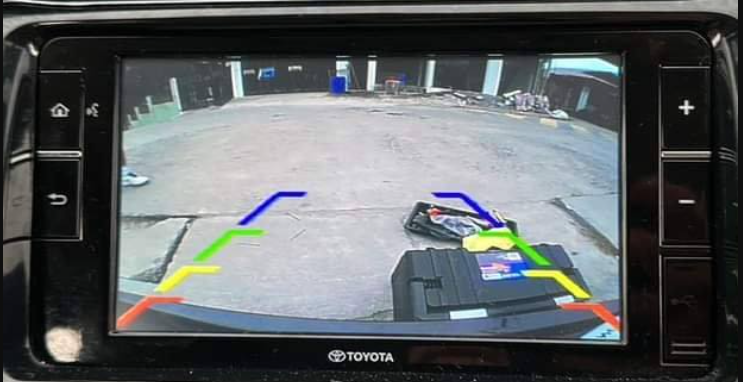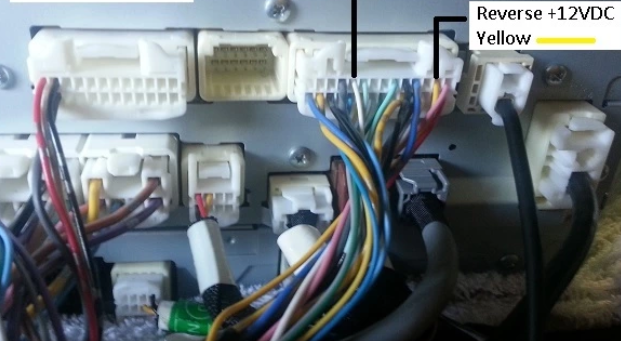The reverse camera is a great tool for reversing and road safety. Aside from using it when parking and reversing when stuck on a blocked highway, you can also use it when towing cargo or a caravan. So when it stops working, you are left in a bit of a pickle.
While many Hilux utes don’t come with a reverse camera as some see it as a luxury, it is an essential tool for something this long. If you can, stick to one with a stock camera as they are more reliable
Reasons Why Your Reverse Camera Is Not Working
The reverse camera can stop working due to several other issues, such as hardware damage, damaged lenses, loose wiring, faulty wiring, and software issues.

Hardware Damage
Hardware damage is one of the most common reasons a reverse camera stops working completely. If the lens, stabilizer, or any other component is broken, you will experience problems.
Solution:
- Check for any exterior damage
- Inspect the camera shell for any noticeable signs of wear.
- If necessary, dismount it from your vehicle for a better look.
- If it is damaged or broken, seek professional assistance.
Note: The camera is bound to get damaged due to impacts, moisture, and extreme temperatures. You can protect the camera by parking your car in a garage or covered area and avoiding areas with a lot of debris or dust.
Dirty Lens
If the reversing camera’s lens is dirty, muddy, or has accumulated dust or water, then this can result in a blurry or not image.
Solution:
- Clean the lens using a soft microfibre cloth.
- For caked-on grime and mud, use a lens cleansing solution.
Damaged Camera Lens
The camera lens can become damaged or scratched, preventing it from working. This will happen if the exterior casing is damaged. The lens can be damaged due to exposure to the elements, such as rain, snow, or salt, on the road.
Solution:
- Inspect the camera lens for any noticeable signs of wear.
- If the lens is damaged, replace it if you have the technical know-how
- Alternatively, take it to a professional for inspection and repair.
Loose Connections
If the wires that are connecting your reversing camera to the screen are loose or broken, the camera will not be able to remit images to the screen.
Solution:
- Fix loose connections.
- Check the wiring connection to the camera by running a complete diagnostic check.
- ensuring all the connections are in place and appropriately tightened.
Note: You can also try to map the entire wiring connection to ensure the wring is not twisted between the camera and the screen
Faulty Camera Wiring
faulty wiring or connections is one of the most common causes of a reversing camera malfunction. The wiring can become damaged or disconnected, preventing the camera from receiving power or transmitting a signal to the car’s infotainment system.

Solution:
- Test the camera unit to ensure it receives power and transmits a signal to the car’s infotainment system.
- Use a multimeter to test the power supply and check if the camera sends a signal.
- If the camera is not sending input after this troubleshooting step, take it to a professional for assistance.
Software Or Firmware Issues
Sometimes, the problem is not with the camera hardware but the software or firmware of the car’s infotainment system. If the software is outdated or there are bugs, it prevents the camera from working as it should.
Solution:
- Check if any updates are available for the car’s infotainment system
- Download the update and update your software
Water Logging
Most reversing cameras are sophisticated devices and can be vulnerable to water. If there is a lot of condensation in your vehicle, it can damage your reversing camera as water can enter the electrical system.
Solution:
- Watch out for condensation
- Regulate the airflow in your car in particularly humid conditions.
Dos and don’ts for maintaining your reversing camera:
Do Clean the lens regularly
Dirt and debris accumulate on the camera lens, affecting the quality of the image. Clean the lens regularly with a soft, lint-free cloth to remove dirt or debris.
Do Check the wiring and connections
Periodically check the wiring and connections to ensure they are secure and free from damage or corrosion. If there is any visible damage, repair or replace the wiring and connections as necessary.
Do Keep the software updated
Software updates add new features to your infotainment system, fix bugs, and improve performance, preventing future issues with your reversing camera.
Do not ignore minor issues
Diagnosing the root of any problems early is crucial to fixing the issue before it gets exacerbated. Ignoring minor issues creates further problems.
Do not use harsh cleaning solutions
Using harsh cleaning solutions damage the camera lens, leading to further problems. Use a soft, lint-free cloth and a gentle cleaning solution to clean the camera lens.
Do not attempt repairs that are beyond your know-how
Attempting repairs beyond your expertise leads to further damage and safety concerns. Seek professional help if you lack technical knowledge or expertise.
Note: Take your car to a professional:
- If you lack the technical expertise to troubleshoot and fix the issue.
- If the camera is severely damaged and needs to be replaced.
- If the issue is related to the electrical system or wiring.
